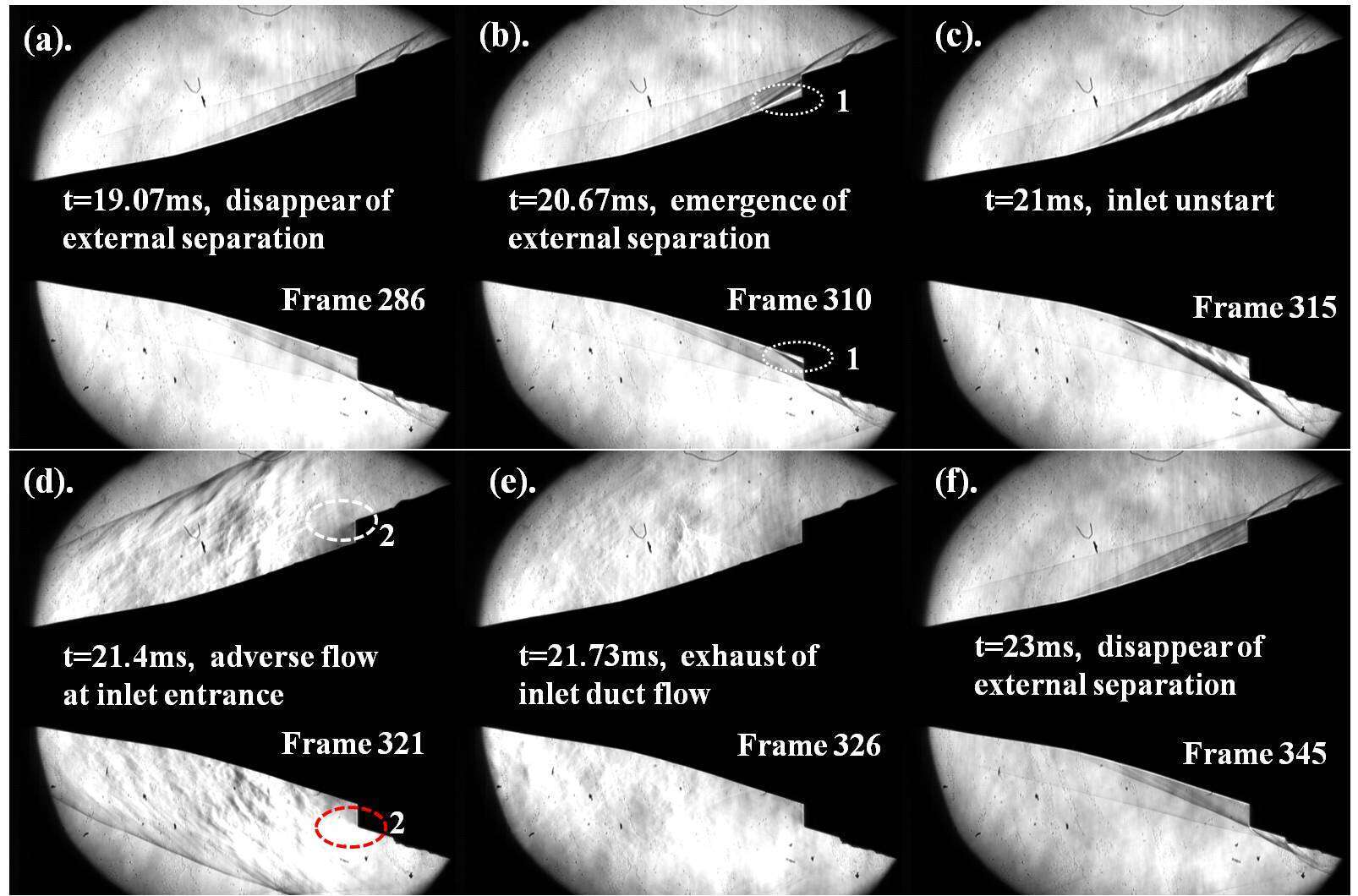Oscillatory flow,known as buzz, may occur in an unstarted hypersonic inlet[1], which can leads to violent shock oscillation, prominent pressure fluctuation, and adverse high-temperature gas from the combustor. Therefore an inlet buzz has to be avoided for the operation and safe flight of a hypersonic vehicle. Many works have been concentrated on the oscillation mechanism as well as previous detection and prevention methods, yet further efforts are still needed for better understanding and more efficient control of its occurrence.
Boundary layer trips(hereafter shorten as trips) are widely used device for the suppression of flow separation which have been used in the practical flight of hypersonic vehicles[2]. The idea of the present work is to examine the possibility of applying trips to the aforementioned oscillatory flow. To the best of the author’s knowledge, little literatures can be found on hypersonic inlet buzz connected with trips, and there is a necessity to characterize such an interaction for both academic and application purposes.

Figure.1Model Drawing and Trips photo. (a). Model Drawing, (b). Trips Photo
The experiments were conducted in a shock tunnel and a hypersonic axisymmetric inlet model with trips was designed for the test (shown Fig.1). The inlet buzzes were obtained by downstream throttling with a fixed block installed at the inlet exit. Untriped experiments were also conducted to analyze the effects of trips on the oscillatory flow. Schlieren photos and pressure measurements along the centerbody were acquired synchronously. Typical schlieren photos of tripped and untripped results within one oscillation cycle are alined in Figs. 2 and 3, respectively. Pressure histories at two selected locations, namely one outside and the other inside the inlet duct (210mm and 350mm from the tip, respectively), are shown in Fig. 4.

Figure.2 Schlierenphotos of 1mm triped inlet in a typical oscillation cycle, Run 059. 1. separation region; 2.expansion fan

Figure.3 Schlieren photos of untriped inlet in a typical oscillation cycle, Run 053. 1. separation region; 2.expansion fan

Figure.4 Pressure Signals during experiments. (a). untriped inlet, (b).triped inlet
It can be easily found that the trips have prominent influence on the inlet oscillation flow. The spillage process and upstream moving separation shocks are strongly suppressed by the tripped flow, and only a small part of the forebody is affected by the oscillation, where the farmost location that the separation shock can reach is well inside the optical windows (Fig.2e).Whereas the separation shocks under the untripped condition can expand to far more upstream, which run out of the visible region completely for a while during the oscillating cycle (Fig. 3e).Owing to its large amplitude oscillation, the frequency is consequently lower and measured to be about 250Hz, compared to 310Hz of the other. Further results and discussions are planned to be completed soon and will be included in the full length paper.
Reference
1.Z. F. Li,W.Z. Gao,H.L. Jiang, and J.M.Yang: Unsteady Behaviors of Hypersonic Inlet by Throttling in Shock Tunnel,AIAA Journal, Vol. 51, No. 10, 2013, pp.2485-2492.
2. S. Berry, K.Daryabeigi, and K.Wurster: Boundary-Layer Transition on X-43A, Journal of Spacecraft and Rockets, Vol. 47, No.6, 2010, pp.922-934.

